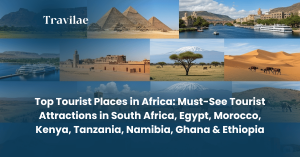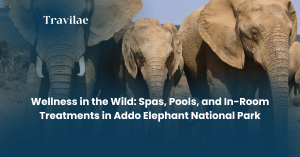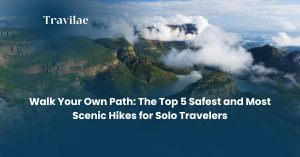Did you know the Tankwa Karoo desert, home to AfrikaBurn, is one of the most extreme environments in South Africa? With temperatures that swing from scorching days to freezing nights, unpredictable dust storms, and total self-reliance required, surviving—and thriving—at AfrikaBurn is an adventure in itself. This guide reveals the essential survival skills you’ll need to make your AfrikaBurn experience unforgettable, safe, and comfortable.
Table of Contents
Best Time to Visit
AfrikaBurn is held annually in late April or early May, when daytime temperatures are more tolerable and nights, though cold, are less severe than in the heart of winter. This timing offers the best balance for desert survival, but always check the event’s official dates and prepare for weather extremes.
How to Get There & Around
- Drive from Cape Town: The event site is about 300 km northeast of Cape Town. The last 100 km is a rough dirt road notorious for flat tires—drive slowly, travel in convoy, and ensure your vehicle (preferably a 4×4) is in top condition.
- On Site: Once you arrive, vehicles are parked. You’ll get around on foot or by bike—bring a sturdy, well-lit bicycle for exploring the vast playa.
Budget vs Luxury Travel Costs
| Expense Category | Budget (Solo) | Luxury (Couple/Group) |
|---|---|---|
| Ticket | $120–$180 | $120–$180 per person |
| Transport | $60–$120 (car share) | $300–$600 (camper van hire) |
| Accommodation | $50–$100 (tent) | $400–$800 (caravan rental) |
| Food & Water | $50–$100 (DIY) | $200–$300 (gourmet, group) |
| Gear & Survival Kit | $50–$100 | $200–$400 (premium gear) |
| Total (est. 5 days) | $330–$600 | $1,220–$2,280 |
Note: Costs are approximate and in USD. Only ice is sold at the event.
Top Survival Skills for AfrikaBurn
1. Radical Self-Reliance
- Bring Everything: You must supply all your own water, food, shelter, and gear for the duration. There are no shops except for ice.
- Leave No Trace: Everything you bring in must leave with you, including all trash and gear.
2. Water Management
- Minimum: 5 liters per person per day for drinking, cooking, and hygiene.
- Tips: Carry a water bottle everywhere, use hydration packs, and monitor for dehydration (dizziness, dry mouth, low urination).
3. Shelter & Weather Protection
- Wind-Resistant Shelter: Use a sturdy tent or shift pod with heavy-duty stakes or rebar to withstand desert winds and hard ground.
- Shade Structure: Essential for daytime heat—tarps or stretch tents work well.
- Warm Bedding: Nights are cold; bring a quality sleeping bag, blankets, and thermal layers.
4. Nutrition & Food Storage
- Easy Meals: Pre-cook and vacuum-seal meals, bring non-perishables, and use a dry ice cooler.
- Nutrient-Dense Foods: Include energy bars, nuts, dried fruit, and superfood shakes for quick nutrition.
5. Clothing & Personal Gear
- Layer Up: Light, breathable clothes for day; warm, insulating layers for night.
- Footwear: Sturdy, closed shoes for rocky terrain; extra socks.
- Accessories: Hats, sunglasses, dust goggles, scarves, and gloves for dust and sun protection.
- Lighting: Headlamps, torches, and LED lights for visibility at night.
6. First Aid & Health
- First Aid Kit: Include plasters, bandages, painkillers, rehydration salts, eye drops, and any personal medications.
- Hygiene: Hand sanitizer, baby wipes, waterless shampoo, and biodegradable soap.
7. Fire Safety
- No Open Ground Fires: Fires must be in raised, wind-protected fire pits. Always have water and a fire extinguisher nearby.
- Never Leave Fires Unattended: The desert wind can cause wildfires in seconds.
8. Power & Communication
- Portable Power: Bring a solar charger or portable power station for devices and lights.
- Emergency Communication: Cell coverage is patchy—inform your group of your whereabouts and camp address.
9. Safety & Security
- Check for Wildlife: Shake out shoes and bedding for snakes or scorpions.
- Personal Safety: Respect boundaries, consent, and camp security. Write your camp address on your wristband.
10. Mental Resilience
- Stay Flexible: The desert tests patience and adaptability. Embrace challenges and lean on the community for support.
Where to Stay
Budget:
- Bring your own tent, sleeping bag, and shade tarp. Join a theme camp for shared resources and support.
Premium:
- Rent a caravan or luxury tent with extra insulation and private amenities. Some camps offer premium setups for a fee (arrange in advance).
Local Tips, Safety, Culture, Language
- Self-Reliance is Key: Don’t expect help unless it’s an emergency—plan for independence.
- Gift Economy: No sales (except ice); gifting and sharing are core values.
- Community Respect: Consent and boundaries are vital; respect others and their space.
- Languages: English is common, but you’ll hear Afrikaans and other South African languages.
- Safety Baron: Nominate someone in your camp to oversee safety and first aid.
Traveler Story: Surviving the Dust
“On my first night, a sudden windstorm nearly flattened my tent. Thanks to heavy-duty stakes and the help of neighbors, I re-secured my shelter and learned to always expect the unexpected. By the end of the week, I was thriving—sharing water, stories, and laughter under the Karoo stars.”
Sample Itinerary: 5 Days of Survival & Adventure
Day 1:
- Arrive, set up wind-proof camp, stock water, and meet neighbors.
Day 2:
- Explore installations by bike, check your hydration, and adjust shelter for sun/wind.
Day 3:
- Join a communal meal, attend a survival skills workshop, and refresh your first aid kit.
Day 4:
- Rest during peak heat, enjoy art and performances at dusk, and check gear for dust/wind damage.
Day 5:
- Pack up, clean your site thoroughly, and join the Temple Burn for a powerful farewell.
Travel FAQs
1. How much water do I need at AfrikaBurn?
At least 5 liters per person per day for drinking, cooking, and cleaning.
2. What kind of shelter is best?
A wind-resistant tent with heavy-duty stakes and a shade structure is essential.
3. Can I buy food or drinks on site?
No—bring all your own supplies. Only ice is sold.
4. How do I stay safe from the sun and dust?
Wear hats, sunglasses, dust goggles, and sunscreen. Cover up and hydrate often.
5. What if I get sick or injured?
A medical team is on site for emergencies, but bring a comprehensive first aid kit for minor issues.
6. Is it safe to camp alone?
It’s safer and more enjoyable to join a group or theme camp for support and shared resources.
7. Are fires allowed?
Only in raised fire pits—never on the ground. Always monitor and fully extinguish fires.
Conclusion
AfrikaBurn is as much a test of your survival skills as it is a celebration of creativity and community. With preparation, the right gear, and a spirit of radical self-reliance, you’ll not only survive but thrive in the Tankwa Karoo’s wild beauty. Ready to embrace the dust and the adventure? Share your top desert survival tip or dream AfrikaBurn moment in the comments below!






